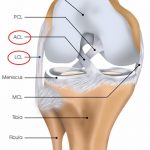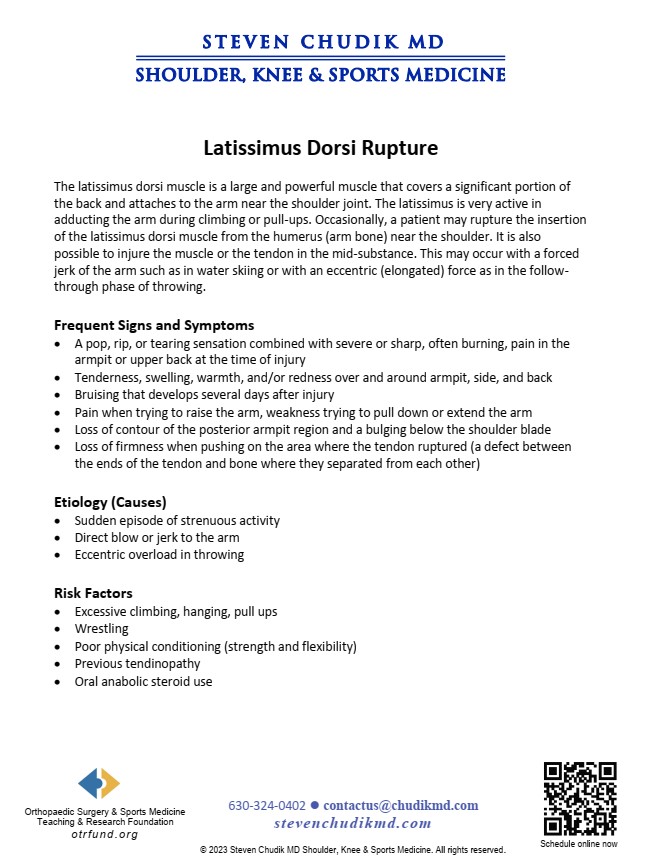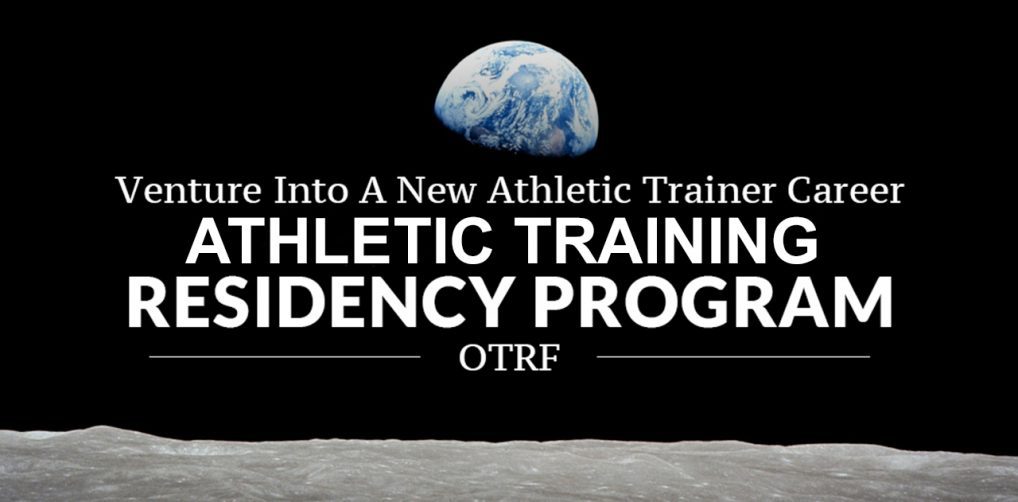 New functional capacity evaluation for ACL injuries definitely tests likeliness for re-injury and readiness to return to sport
New functional capacity evaluation for ACL injuries definitely tests likeliness for re-injury and readiness to return to sport
The latissimus dorsi muscle is a large and powerful muscle that covers a significant portion of the back and attaches to the arm near the shoulder joint. The latissimus is very active in adducting the arm during climbing or pull-ups. Occasionally, a patient may rupture the insertion of the latissimus dorsi muscle from the humerus (arm bone) near the shoulder. It is also possible to injure the muscle along the tendon or in the mid-substance. This may occur with a forced jerk of the arm, such as in water skiing, or with an eccentric (elongated) force as in the follow-through phase of throwing.
Initial treatment consists of rest and icing the injured area. A sling may be given for comfort. Small partial latissimus dorsi tendon injuries may be treated conservatively with shoulder exercises completed under the supervision of a physical therapist or athletic trainer. Treatment of complete tears is somewhat controversial. Tears in the mid-belly and at the muscle-tendon junction are not favorable to repair. For the active athlete with a tear at the bony insertion, surgical reattachment of the tendon to the humerus is a possible treatment option. Depending on the needs of the athlete, good functional outcomes have been reported with surgical or nonoperative treatment. Without surgery, the loss of normal armpit contour and some weakness of the shoulder will persist. Repair within the first few weeks provides a better result and is technically easier to perform. After surgery and immobilization for six weeks, physical therapy is needed to regain shoulder motion and strength.
Learn More
Content provided by Dr. Chudik not to be used for diagnosis and treatment. You can receive a proper evaluation and diagnosis by making an appointment with Dr. Chudik
 Expand your world of opportunities as a Clinical Athletic Trainer
Expand your world of opportunities as a Clinical Athletic TrainerOTRF is accepting applications until March 15 for its 2024-2025 CAATE-accredited Athletic Training Residency Program
Applications and additional information are available here.